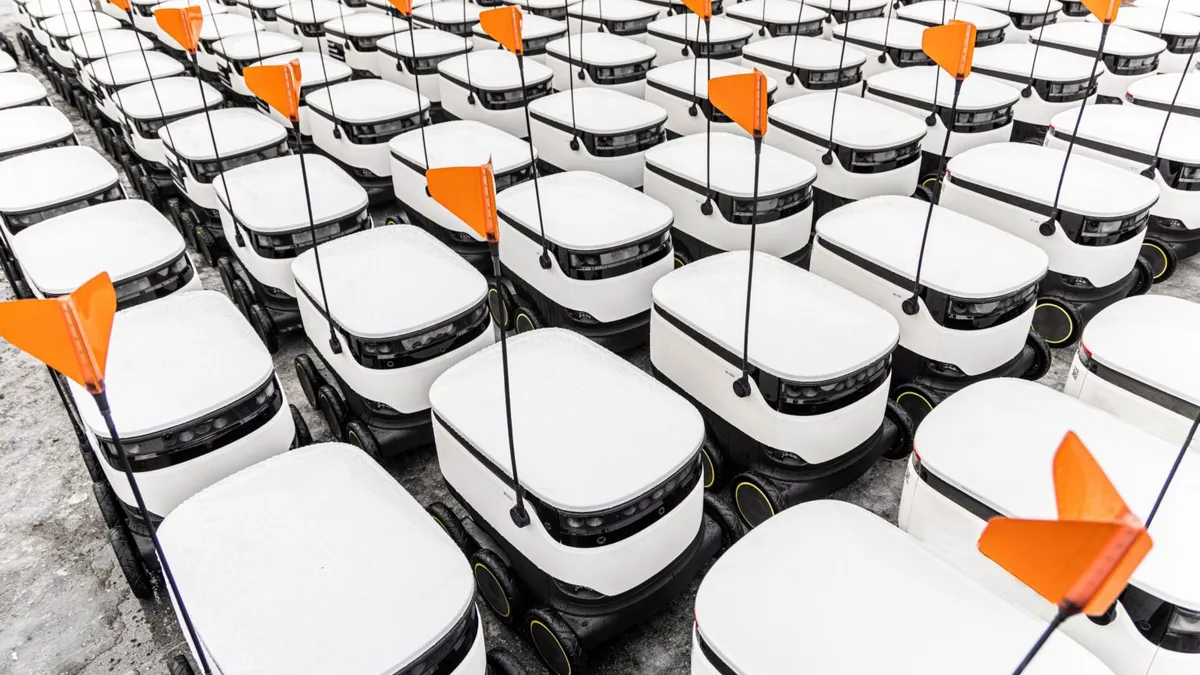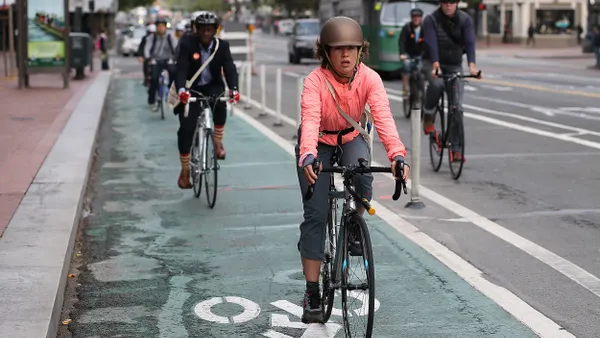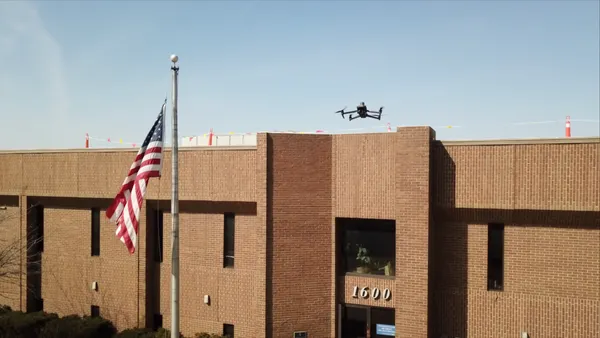Dive Brief:
- Food delivery robots will head for Chicago's sidewalks following the city council's recent approval of a pilot program.
- Delivery device tech companies will partner with restaurants and grocery stores to deliver the orders, which customers will request through an app. The robots will operate on sidewalks and within crosswalks within a small radius of the participating food businesses.
- The city's Department of Business Affairs & Consumer Protection will issue two-year permits to companies that apply for the pilot. The department will jointly manage the program with the Chicago Department of Transportation.
Dive Insight:
This delivery device pilot is technically an expansion of a pilot that originated on the University of Illinois Chicago campus in partnership with Starship, a company offering autonomous delivery robots. After more than a year, the university approached the city about expanding its pilot into the surrounding community, according to Kenneth Meyer, commissioner of the Chicago Department of Business Affairs & Consumer Protection. Under the program newly approved by the city council, other tech vendors will be able to apply for the Emerging Business Permits as well.
The city will likely re-examine the robots' boundaries as the testing takes place because "we just don't want them to be all over the city of Chicago all at one time," Meyer said. One of the city's leading concerns is adequately engaging the accessibility community in conversations to ensure the robots do not impede the right of way and that people of all abilities will be able to use this delivery service.
"For example, if someone in the accessibility community wants to be able to order food, is there a way for the device to open up if someone is, let's say, visually impaired?" Meyer said.
Theft or vandalism is another concern the city is monitoring. The Starship robots weigh about 75 pounds and emit an audio warning when picked up. Each robot uses geographical tracking technology to allow the company always to know its location and receive a notification if anyone vandalizes or picks up the device.
Vandalism is "definitely going to be a challenge, especially as we see more deployment" of delivery robots, said Amanda Howell, a researcher with the Urbanism Next Center at the University of Oregon. She's part of a research team that released a report in August detailing the results of pilot programs with Kiwibot's sidewalk delivery robots in Detroit; Pittsburgh; Miami-Dade County, Florida; and San Jose, California.
The report includes a couple of key findings: It is important to select great partners and require operators to conduct demonstrations that provide low-stakes opportunities for the public to engage with the technology. "Piloting is absolutely critical" before launching full-blown, permanent programs, Howell said, adding that public-private collaboration and sharing results with other cities also is key.
"The reality of our streets is so much more complicated, and the reality of urban life is so much more complicated, than the closed testing environments that some of these robots have been on," she said. “[Robots are] another thing that we're introducing onto our limited infrastructure."
Howell said it's essential to test and tweak processes for new technologies or concepts, like electric scooters or delivery robots, before scaling them up "because there are so many questions [about] how it truly works and where it can operate successfully and safely." The researchers concluded that sidewalk delivery robots are not ready for permanent programs and need more pilots to perfect the technology and operating models.
Chicago likely will do a mid-pilot assessment and determine whether to alter the remainder of the two-year program, Meyer said. BACP and CDOT will "try to get as much community engagement as possible" during their oversight and evaluation of the demonstration, including checking for complaints or feedback submitted through 311. They'll also engage with the robot operators and food vendors for feedback.
"I'm interested to see how they work, and to see how they work in the Chicago climate," he said.











